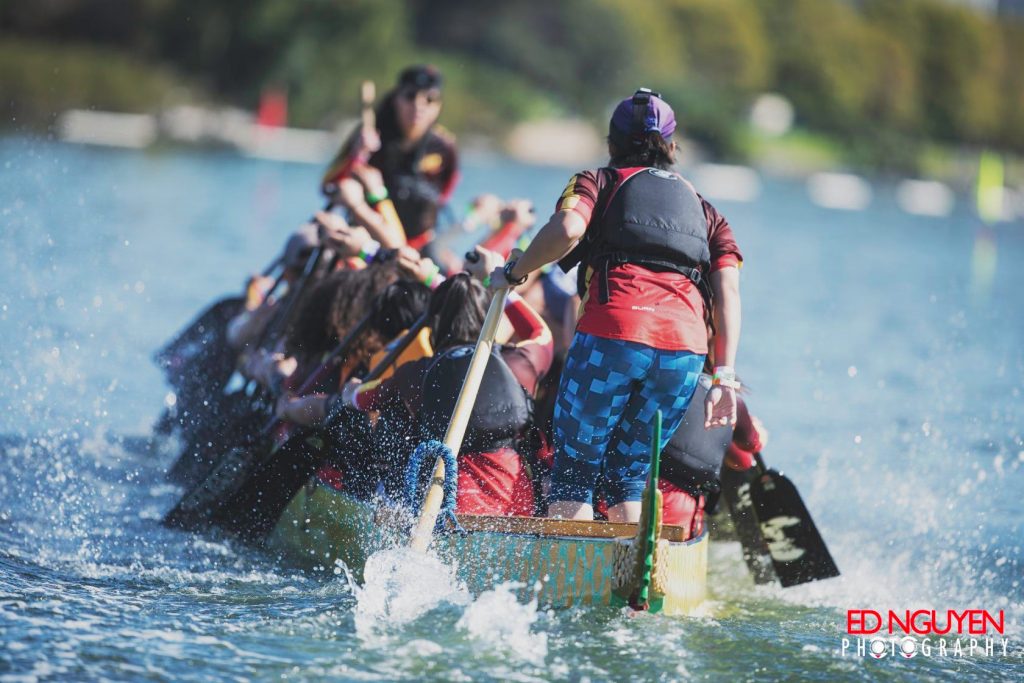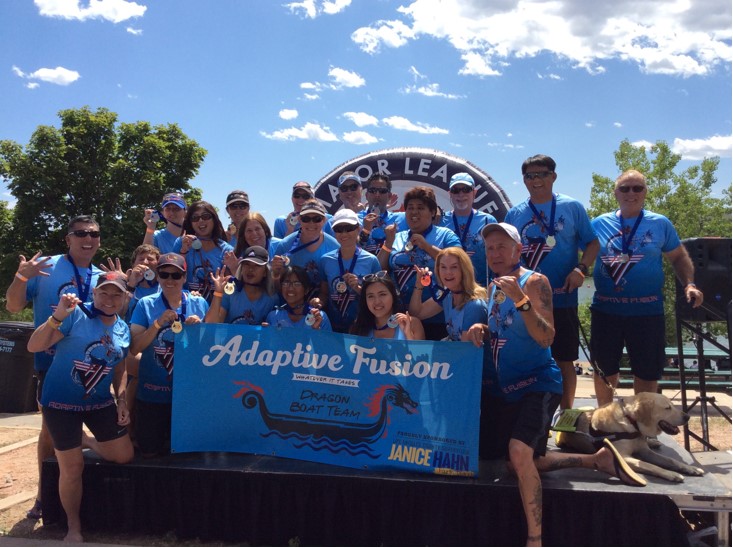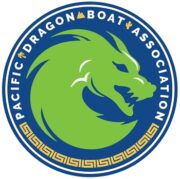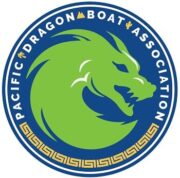Dragon boat racing has a history dating back over 2500 years to ancient China. A dragon boat is an approximately 4-foot long canoe that gets its name from the decorative head and tail that adorn the canoe hull for festivals.
Boats are traditionally powered by a crew of paddlers that sit two abreast and paddle with a canoe paddle. The number of paddlers varies, but in modern racing, a crew is most commonly 20 paddlers for a standard boat, and 10 for a small boat. In addition to the paddlers, a drummer sits on the front and uses a large drum to communicate the cadence that is set by the lead paddlers. The boat is steered by steersperson that keeps the boat on course with a very large oar at the back. Some forms of dragon boat racing also feature a person whose job is to catch a flag while precariously clinging to the dragon head on very large boats under full power.
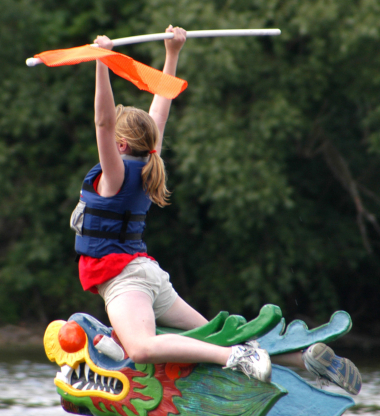
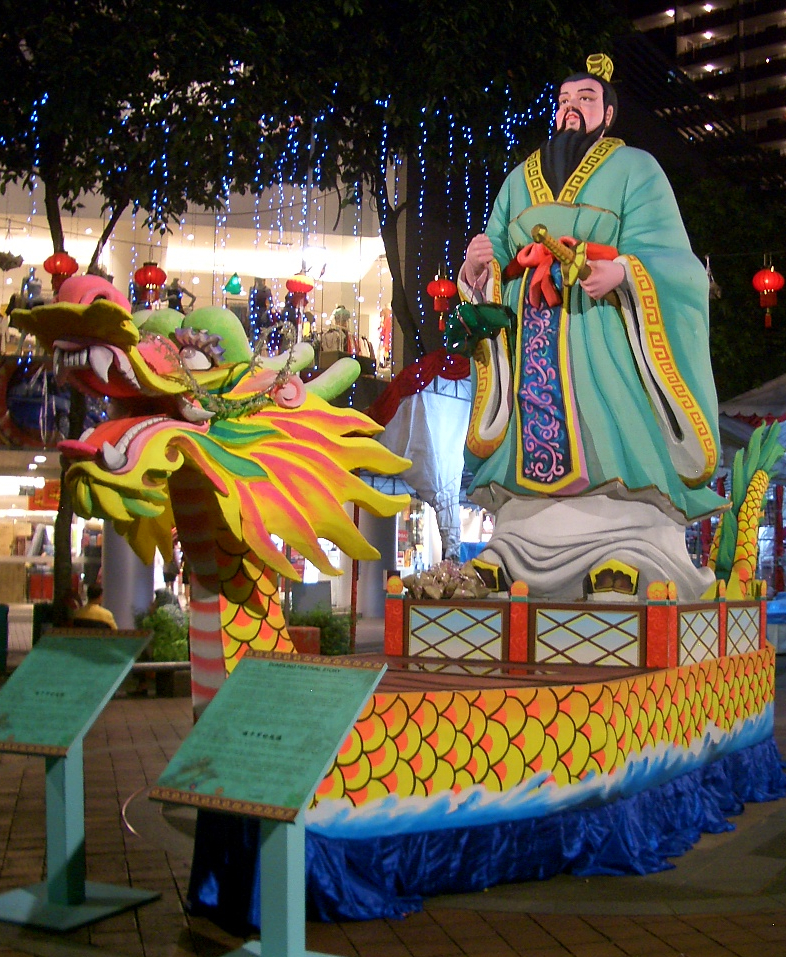
Dragon boating has a close connection to folk tradition and legend in China. There are many stories about the origin of the sport, but the most common one is about a much-loved poet, Qu Yuan, who served as a minister during the Zhou Dynasty. Distraught by political changes he opposed, he drowned himself in the Miluo River. The people tried to save him in their boats, beating the water with their paddles and drumming on the sides of the boat to scare the evil spirits away. Failing the rescue, they seeded the water with rice to distract the fish from his body.
Today, he is remembered at the festival of Duan Wu, which we call the Dragon Boat Festival, or sometimes the Double Fifth Festival. It is traditionally observed on the fifth day of the fifth month of the Chinese lunar calendar (usually mid-June). However, some of the associated traditions can be seen at dragon boat festivals throughout the racing season. Many early-season festivals will do an eye-dotting ceremony, complete with Taoist blessings. In ancient practice, the teak boats were sunk to river bottoms, which protected them from the effects of temperature and humidity. Upon raising the boats in the spring, the dragon’s eyes were dotted in red paint, returning its sight and awakening it to its full power. Festivals also frequently feature other cultural traditions such as colorful lion and dragon dancing, and the eating of zongzi, a traditional sticky rice bundle that recalls the rice dropped into the river at Qu Yuan’s passing.
Who Dragon Boats?
Today, dragon boat racing is one of the fastest-growing water sports in the world. It is truly a team sport with no star players, accessible by nearly anyone. There are entire teams of middle school students racing through their schools, and there are athletes competing internationally in their 70s. It is a sport that can be learned in the first hour of getting in the boat, yet it takes a great many years to master. It is multicultural and inclusive, and the fitness benefits are both mental and physical. It is steeped in tradition, yet embraces the modern.
Breast cancer survivors are closely connected to dragon boating due to the efforts of two Canadian doctors. In the mid-1990s, they trained a team of survivors in an effort to disprove the common belief that rigorous, upper-body exercise could result in lymphedema. In their success, they also proved the emotional and mental benefits of close team connections, and that maintaining an active lifestyle in the wake of diagnosis can decrease the risk of recurrence. Breast cancer teams can be found nearly anywhere dragon boating is.
Recently, the dragon boat community has been expanded by a growing class of athletes called the Paradragons. These are athletes that have some sort of mental, physical, psychological, neurological, sensory, developmental, or intellectual impairment, and it is nothing short of inspiring to see them racing on the water. There are only a few of these teams in our region, but their numbers are growing, and they have been given special waivers to compete in conglomerate teams at national competition while the division develops. If you are a member of this community and interested in connecting to a team, contact the national coordinator for Paradragons.
